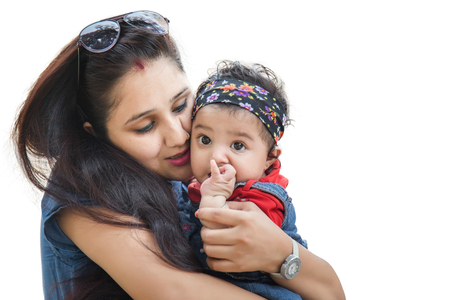Introduction: The Importance of Family and Festivals in Indian Culture
In India, family and festivals are at the very heart of everyday life. From the colourful celebrations of Diwali and Holi to the sacred rituals during Eid and Christmas, Indian festivals create a vibrant atmosphere that brings people together across generations. These occasions are not just about food and festivities; they serve as powerful platforms for cultural expression, storytelling, and the sharing of traditions. Within this rich social tapestry, children are exposed to a variety of languages, dialects, and ways of communication unique to each region and community. As families gather to celebrate, children naturally absorb new words, phrases, and expressions through conversations, songs, and traditional stories. This immersive environment provides a strong foundation for childrens language development, supporting their ability to communicate confidently both within their families and in the wider society. Understanding the significance of these gatherings helps us appreciate how deeply intertwined cultural practices are with the growth of language skills in young minds across India.
2. Rich Linguistic Exposure During Indian Festivities
Indian festivals and family gatherings offer a vibrant and diverse linguistic environment that is unique to the country’s multicultural fabric. During these celebrations, children are naturally exposed to multiple languages and dialects, reflecting the rich linguistic heritage of India. Whether it’s Diwali, Eid, Christmas, or regional festivals like Pongal or Onam, families often come together from various states and communities, each bringing their own mother tongue and local expressions.
The Multilingual Setting of Indian Celebrations
It is common for conversations at these gatherings to effortlessly switch between Hindi, English, Tamil, Bengali, Telugu, Marathi, Urdu, and many more. Children observe adults greeting each other in different languages or using regional phrases unique to their cultural backgrounds. This exposure allows children to pick up new words, sentence structures, and even accents just by listening and participating in group activities such as prayers, songs, and storytelling sessions.
Examples of Language Use During Festivals
| Festival | Common Languages Spoken | Cultural Activities Involving Language |
|---|---|---|
| Diwali | Hindi, Gujarati, Marathi, English | Singing bhajans (devotional songs), reciting shlokas, exchanging greetings like “Shubh Deepavali” |
| Eid | Urdu, Hindi, Malayalam, English | Sharing traditional greetings like “Eid Mubarak”, narrating stories of faith and charity |
| Pongal | Tamil, Telugu, English | Singing folk songs, performing rituals with specific chants and mantras |
| Christmas | English, Malayalam, Konkani, Hindi | Singing carols in different languages, telling biblical stories in the local tongue |
Natural Language Learning Through Interaction
This multilingual environment not only helps children understand the significance of their own mother tongue but also builds respect for other languages spoken by friends and relatives. The casual mixing of languages—often called “code-switching”—is a normal part of communication at these events. Children quickly adapt to this natural flow and may even begin using words from other languages in their daily conversations.
By simply being present in these festive environments, children gain practical language skills that go beyond classroom learning. They acquire an ear for different sounds and rhythms of speech while building confidence in expressing themselves among peers and elders alike. For Indian families, every celebration becomes an opportunity for holistic language growth rooted in cultural pride and mutual understanding.

3. Storytelling and Traditional Practices as Language Builders
India’s vibrant festivals and family gatherings are not only about celebrations and rituals, but also provide a rich environment for nurturing children’s language skills. A unique aspect of these occasions is the tradition of storytelling, often involving folk tales passed down through generations. Grandparents and elders share stories from epics like the Ramayana and Mahabharata, local legends, or Panchatantra tales, using expressive language, gestures, and voice modulation. These sessions encourage children to listen actively, ask questions, and retell stories in their own words, helping them develop both vocabulary and confidence in oral communication.
Another important element is the singing of bhajans (devotional songs) and folk songs in regional languages during festivals such as Diwali, Holi, Navratri, or Pongal. Children learn to memorise lyrics, understand meanings, and pronounce words correctly while participating in group singing. This musical exposure introduces them to a variety of linguistic patterns and poetic expressions, enriching their vocabulary across different Indian languages like Hindi, Tamil, Telugu, Bengali, Marathi, and more.
Traditional games played during gatherings—such as Antakshari (a singing game), Kabaddi, or Pallanguzhi—not only build bonds among children but also require them to follow instructions, use descriptive language, and negotiate with peers. These interactive experiences encourage spontaneous speaking and listening skills in real-life social contexts. Through these practices deeply embedded in Indian culture, children are gently guided towards mastering both formal and informal uses of language in a way that textbooks alone cannot offer.
4. Intergenerational Communication and Learning
One of the most significant aspects of Indian festivals and family gatherings is the interaction between children and elders, especially grandparents. These moments provide a unique environment where language is not only spoken but also deeply felt through stories, songs, rituals, and blessings. When families come together, children are exposed to the wisdom and experiences of older generations, which is invaluable for both cultural education and language development.
During these festive occasions, elders often narrate folk tales, recite traditional prayers in languages like Hindi, Tamil, Bengali, or Telugu, and share anecdotes from their own childhoods. This multi-lingual exposure introduces children to new vocabulary, local dialects, and culturally specific expressions. The respectful manner in which younger members converse with elders—using appropriate greetings such as “Namaste” or “Pranam”—reinforces both linguistic etiquette and social values.
| Interaction Type | Language Skills Developed | Cultural Values Imparted |
|---|---|---|
| Storytelling by Grandparents | Vocabulary enrichment, listening comprehension | Moral lessons, historical awareness |
| Singing Traditional Songs | Pronunciation, rhythm & intonation | Community spirit, celebration of heritage |
| Participating in Rituals | Understanding instructions, ritual-specific vocabulary | Respect for tradition, sense of belonging |
| Conversational Exchanges | Conversational skills, turn-taking in dialogue | Politeness, empathy for elders |
This intergenerational communication ensures that children not only learn how to express themselves effectively but also inherit the rich tapestry of Indian culture. By hearing stories in different languages or dialects at home, children become more confident in using multiple languages—a key skill in India’s diverse society. Moreover, the emotional bond formed during these exchanges motivates children to listen attentively and respond thoughtfully.
For parents and caregivers, it is essential to encourage such interactions during every festival or family gathering. These opportunities help bridge the gap between generations while strengthening both linguistic abilities and cultural identity in the next generation.
5. Encouraging Participation and Confidence Through Group Activities
During Indian festivals and family gatherings, group activities play a vital role in nurturing childrens language growth. Collective experiences such as making rangoli, singing bhajans or folk songs, and participating in dramatic performances are not just fun—they are essential opportunities for children to express themselves among peers and elders. These group settings encourage kids to communicate their ideas, listen to others, and collaborate, which helps build both language skills and social confidence.
For example, when children join hands with cousins and friends to create colourful rangoli designs during Diwali, they naturally discuss patterns, colours, and stories behind the motifs. This interactive process introduces new vocabulary, encourages descriptive language, and fosters storytelling skills. Similarly, singing together during Holi or Christmas carols offers exposure to different languages and dialects, improving pronunciation and comprehension in a joyful environment.
Dramatic performances—whether enacting mythological tales during Dussehra or performing skits at family reunions—require children to memorise dialogues, understand character roles, and convey emotions effectively. Such experiences not only sharpen verbal abilities but also teach children about non-verbal communication through gestures and expressions. Parents and elders often guide these activities by offering gentle corrections or encouragement in Hindi, English, or regional languages like Tamil, Bengali, or Marathi—making the experience truly multilingual.
Encouraging every child to participate in these group activities is crucial. Whether a child is outgoing or shy, inclusive celebrations provide a safe space for them to practice speaking up and gain confidence. In Indian families where respect for elders is emphasized, children often learn how to address different age groups appropriately—a valuable social skill tied closely with language development.
Through these collective cultural experiences, children not only strengthen their linguistic abilities but also build lasting memories of teamwork and celebration that reinforce positive attitudes towards communication.
6. Tips for Parents: Supporting Language Growth During Festivals
Encourage Active Participation in Rituals
Allow children to take part in festival rituals, whether it is lighting diyas during Diwali, tying rakhi on Raksha Bandhan, or applying tilak at family gatherings. Gently explain the significance of each activity using simple language. Invite your child to ask questions and express what they observe, which helps build vocabulary and cultural understanding.
Share Festive Stories and Songs
Storytelling is a cherished tradition in India. Narrate folktales, religious stories, or anecdotes related to the festival in your home language or English. Sing traditional songs and bhajans together, encouraging your child to repeat lines or learn new words. These activities promote listening skills and language retention while keeping the festive spirit alive.
Engage in Festive Conversations
During family gatherings, motivate your child to interact with elders and peers. Guide them with polite greetings like “Namaste,” “Happy Holi,” or “Eid Mubarak.” Encourage your child to describe their festival experiences, favourite foods, or decorations. Such informal conversations help children practise expressive language in a warm and supportive environment.
Create Festival-Themed Activities
Organise simple games like Antakshari (song chain), charades using festival-related words, or drawing competitions about festival scenes. These playful interactions foster creative use of language and make learning enjoyable. If possible, involve children in writing greeting cards or thank-you notes to relatives in English or their mother tongue.
Use Everyday Moments as Learning Opportunities
Let your child help with festival preparations—shopping at the market, preparing sweets, or decorating the house. Engage them in conversation by naming items (“This is gulab jamun”), discussing steps (“Let’s put marigold flowers here”), and asking open-ended questions (“Which colour rangoli do you like?”). This natural dialogue enhances vocabulary and comprehension skills.
Be Patient and Celebrate Progress
Every child learns at their own pace. Praise their efforts to speak new words or share stories, even if they make mistakes. Offer gentle corrections when needed, but focus on building confidence through encouragement and celebration of small achievements during these joyful occasions.
7. Conclusion: Cherishing Culture for Lifelong Language Benefits
Embracing the vibrant tapestry of festivals and family gatherings in India provides much more than moments of joy—it creates a nurturing ground for childrens language and emotional growth. These cherished traditions, rooted deeply in Indian culture, offer children abundant opportunities to listen, speak, and interact in multiple languages, whether it is Hindi, Tamil, Bengali, Telugu, or English. Through rituals, storytelling, folk songs, and shared laughter at home or within the extended family, young minds naturally absorb new vocabulary, cultural expressions, and social cues. Such experiences do not just enhance linguistic skills; they build confidence and a strong sense of belonging. As parents and caregivers celebrate Diwali’s lights or Eid’s warmth with their little ones, they are also passing on values and communication skills that last a lifetime. By honouring these festive moments and keeping traditions alive—whether in bustling cities or quiet villages—we ensure that the next generation grows up with both linguistic richness and emotional strength. Let us continue to cherish our unique heritage, knowing that each family gathering is an investment in our children’s future success and happiness.

